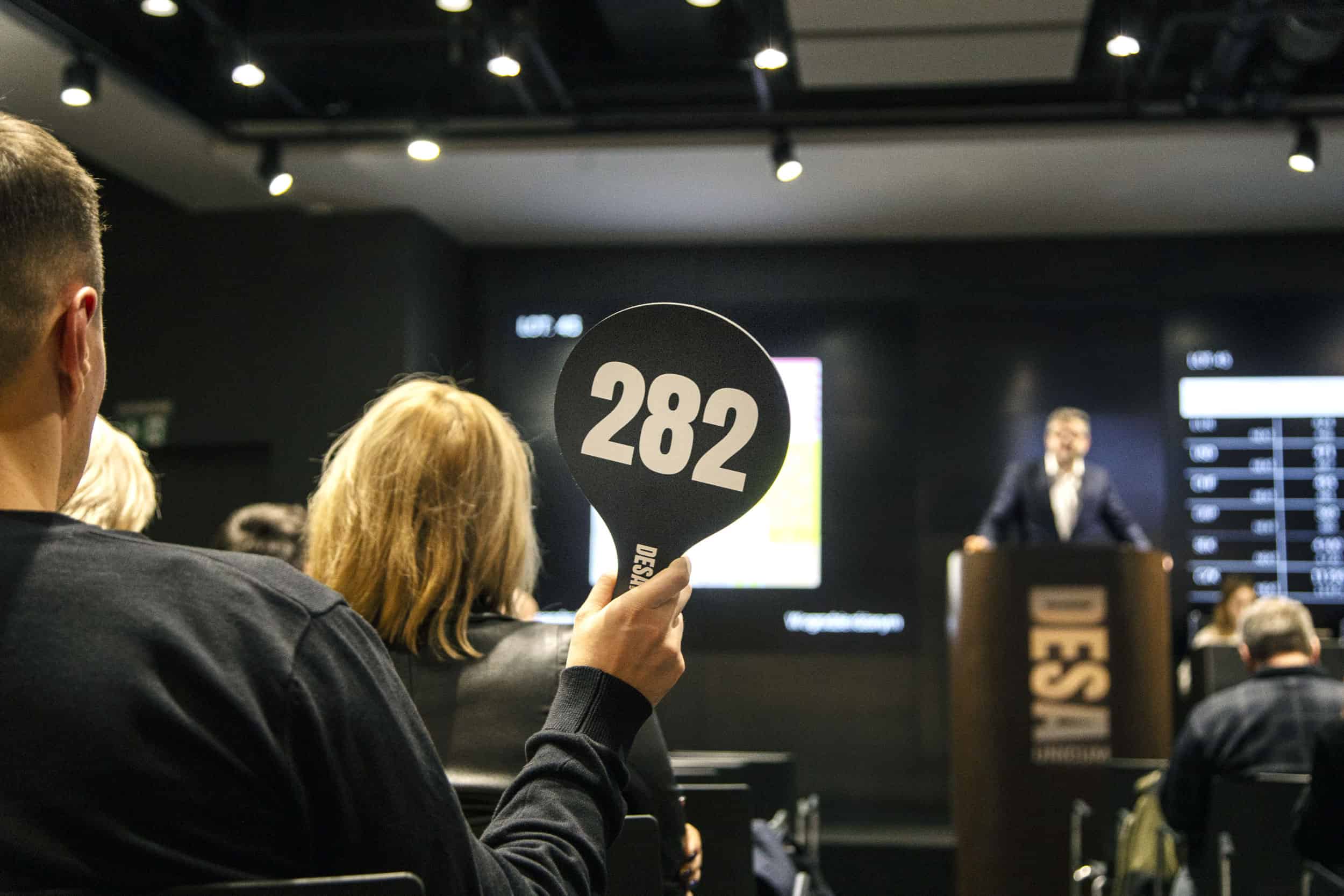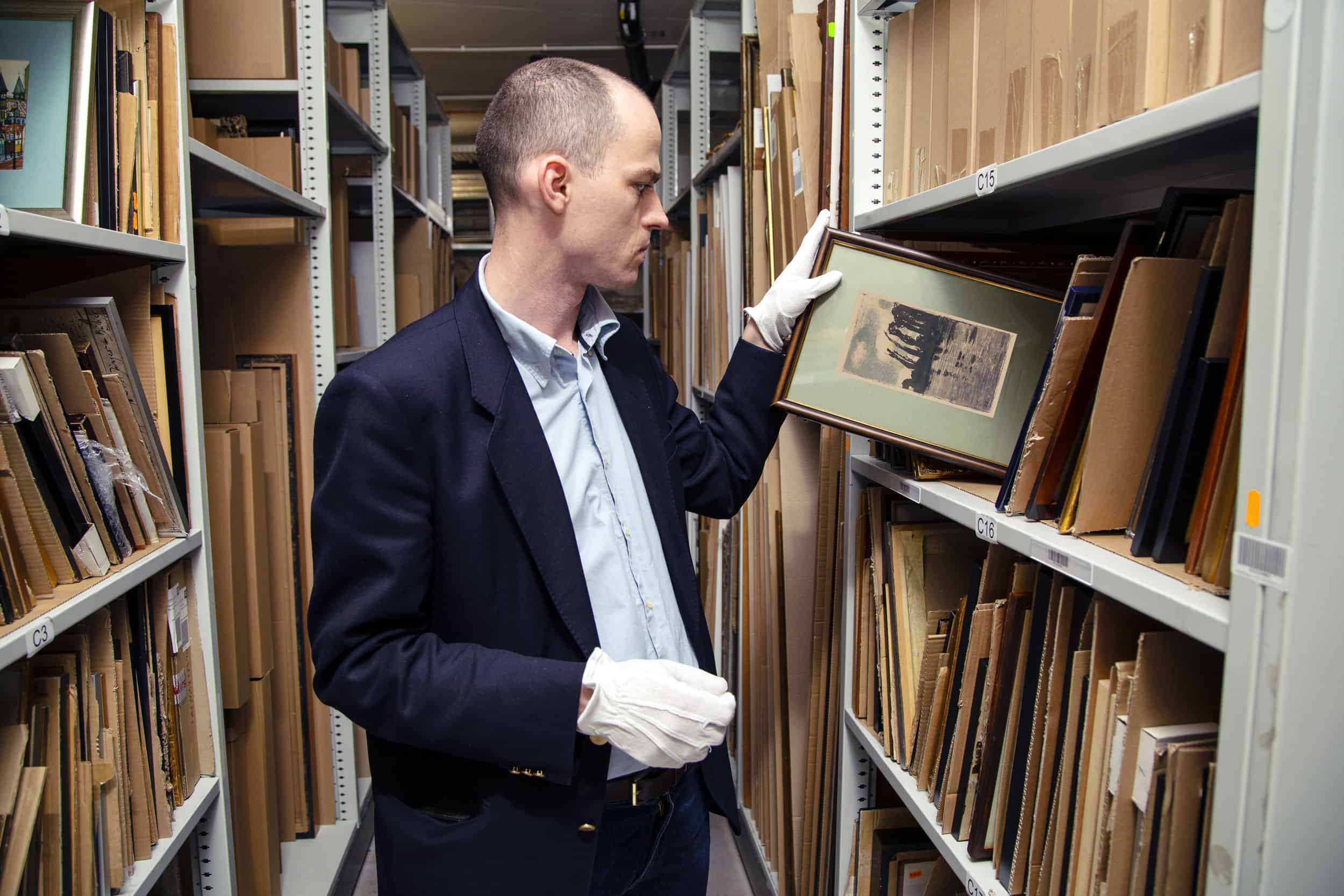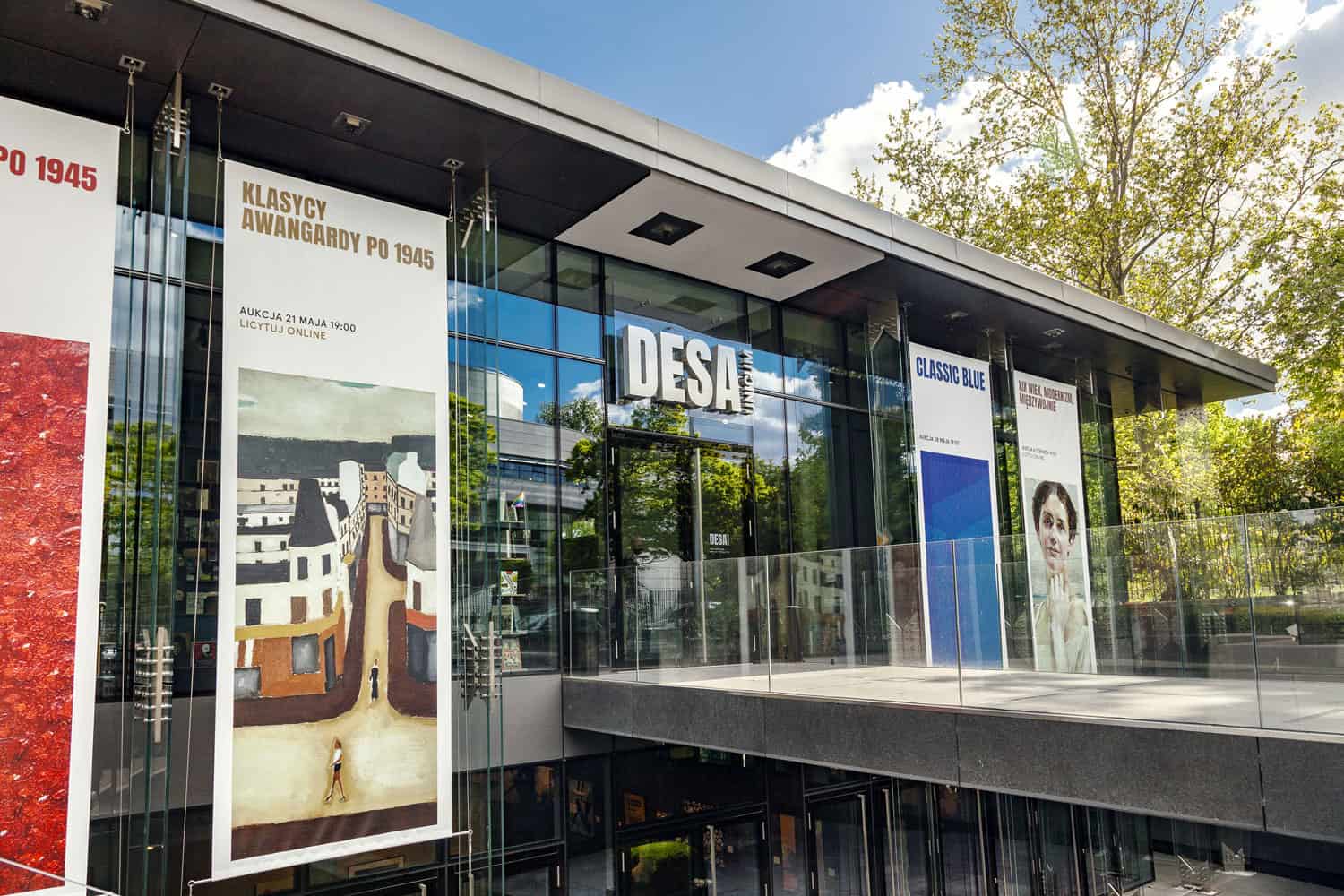Fresh graduates of art history or other studies related to art and culture begin the search for their career path. Though humanistic studies open one’s head and allow seeing reality from a wider perspective, finding work after such education can often seem like a challenge. This is why it’s worth considering your career path before getting your diploma. One of the options is to take up work at an auction house. Now, it is good to understand what this line of work looks like and what skills one should have to do it properly. To our aid came DESA Unicum Auction House staff members: Jan Koszutski — Member of the Board, Iza Rusiniak — Director of Auction Department, Artur Dumanowski — Vice Director of Auction Department, and Agata Szkup — Director of the Sales Department, who all told us about their daily work and the experience gained over time. While a job at an auction house is very demanding it can also provide unforgettable experiences.

Courtesy DESA Unicum, photo: Paweł Bobrowski
Patrycja Głusiec: DESA Unicum’s team is made up of 85 people — these are highly qualified experts in areas of art history and art conservation, salesmen skilled in talking with the collectors, and the technical/logistics department responsible for the exhibition implementation. What kind of skills does one need to have in order to work in such a multidimensional auction house?
Jan Koszutski — DESA Unicum Auction House Board Member: DESA Unicum is a multifaceted place – working in this industry for many years we acquired a broad knowledge of the whole market. It helps us do our work in the best way possible. We are open and up for challenges. Every specialist develops skills he or she needs. For example, a person working in the department that deals with acquiring the objects has to be receptive to different types of art. When we enter a collector’s flat, a specific object is often the reason for our visit. But it frequently turns out that what we find there are other incredibly interesting objects. This is why curiosity is really important here. Our employees don’t limit themselves to their specialisation. We stay open to different categories, and draw from specialists’ expertise.
Finishing studies is just the beginning of a professional career, you’ll need to learn a lot of things in order to gain market experience. The implementation process itself lasts from a couple up to a dozen or so months. It’s a matter of contacts, meeting the artists and building relationships. It is the sum of all these things that creates confidence when picking the objects and establishing their prices. It is necessary to develop a good intuition. After you get intuitive you can dedicate yourself to discovering your area of expertise. We consciously give our employees an opportunity to gain experience in different departments. We want them to find the area in which they are the best themselves.
PG: DESA Unicum also deals with valuation of the art works, as well as their authentication for clients who would like to put them up for auction. What does this process look like?
JK: First and foremost we must be certain that the objects put up for auction are authentic, and this is the main task of our experts. During the process, which we call “commission” works of art are viewed and examined. A lot of them require a more thorough inspection, e.g. a meticulous eye of a conservator. While gaining experience with this object-oriented work we also gain a sense and intuition about these works. You could say there are three categories of art objects. The first category includes those immediately obvious ones which pose no doubt when it comes to their authenticity, the second one where we know that are not authentic, and the third category where the jury is still out on it.
For every different type of art the road to auctioning it will be different. We proceed differently with contemporary sculpture, and differently with old painting or artistic craftsmanship. We also have an art conservator of our own on the team. Sometimes we get assistance from museum specialists who help us with the technological assessment. Even after many months an archival source can surface confirming the authenticity of an object. The notion that antiquary’s work is boring doesn’t check out here at all.

Courtesy DESA Unicum, photo: Marlena Talunas
PG: Auction house is more than just auctions and collection building, it is also meritorical work e.g. editing of auction catalogues, scientific queries, and a constant sourcing of new items for auctions. Please tell us about the complex process of preparing every auction.
Iza Rusiniak – Director of Auction Department: People working in the Auction Department are art history graduates, as well as collector market and different art types aficionados. We have twenty such specialists on our team.
The process of creating an auction is multi-layered. Our specialists are constantly receiving inquiries from both collectors and people who own collector’s items. They ask for valuation of the object and the possibility of putting it up for auction. The first task is to assess what the clients are offering. The objects for upcoming auctions are gathered via this method. After quoting the object and the owner’s approval of the price we ask for the said art work to be delivered. Initially DESA Unicum Auction House accepts such an object and gives out a receipt. What follows is the signing of the commision contract. In that contract a set price is determined below which the object cannot be sold.
Apart from that, our employees are actively searching for works of art both on Polish and global market — one of the auction coordinator duties is to persuade potential sellers to put works of art they own up for auction. After the contract is concluded the object is researched, a library query. The object is also physically inspected by art conservators. Before the work of art is admitted to be auctioned we need to examine its authenticity. Next, our specialists work on auction catalogues, create a basic technical description of the object, write commentary and articles related to the individual pieces, and zoom in on the artist silhouette. When the offer is ready, working on the catalogue starts. The Auction Department job isn’t done until the the catalogue publication. The catalogue is created in the traditional form as well as an online one.
The next stage is to prepare the pre-auction exhibition — it is being worked on by the Auction House technical team. Every client can see live what interested him in the offer. The exhibition is a public event, open not only for clients. We invite all art lovers that would like to see works of art live.
Sales Department contacts potential clients. Accompanying the auction are guided curatorial tours that take place after the exhibitions, and other educational-promotional activities related to it.
Artur Dumanowski – Vice Director of Auction Department: Our offer is attractive for art collectors. It is important for us that the items available at the auction are diversified.
Courtesy DESA Unicum, photo: Marcin Koniak
Courtesy DESA Unicum, photo: Marcin Koniak
PG: And now we come to the culmination point, the auction…
IR: On the day of the auction works of art are publicly bid on. A very large team works on the auction itself. We need people who take care of the registration of the participants, and also people who work on the protocol. There are many tasks to be done for everything to run smoothly, so that the auction main actor himself, the auctioneer, may appear. Most often it is Juliusz Windorbski — President of DESA Unicum, or Jan Koszutski. Recently, DESA Unicum Auction House held a course in the art of conducting public auctions. Several people from the younger team attended it. So we had some “fresh blood” at the auctions.
PG: But the auction alone isn’t the end of the process, isn’t there also work to be done afterwards?
IR: Absolutely. During the auction the works of art that are sold change their owners. A time for the payment is set and transport is organized. Clients who sold their items, after 28 days, receive the due amount. Each auction is analysed.
PG: What other “assets” should a person working at an auction house possess?
IR: They should know what is happening in the art market today, what prices are standard at the moment. A specialist who works at an auction house is a cross between an academic forager — art historian, cultural monument scholar, and a salesman. He or she must have a business sense, be a market animal, understanding how trends work. Working at an auction house provides lots of excitement, adrenaline, but also demands good negotiation skills. You have to know how to talk to a collector, and how to encourage him to put his work of art up for auction. Works of art are part of a given collector’s biography. The discussions might turn out to be challenging, because you no longer just deal with the work of art, but now also a person.
AD: The job of people who receive objects for sale at the Auction House DESA Unicum can sometimes remind that of a detective. During the preparation of the catalogues and our research about works of art, we often stumble upon previously unknown facts. In this way we go beyond the schematic work of an art historian because we don’t limit ourselves to a list of available information. Often we encounter works of art that are shrouded in mystery, and it forces us to search and explore. Our task is to recognise characteristics of artist’s style, and attribution. Through our findings we give works of art a new life.

Courtesy DESA Unicum, photo: Paweł Bobrowski
PG: Unusual auctions or thematic auctions are also a challenge?
IR: Sometimes we organize nonstandard auctions.They are based on a specific theme, a guiding idea. Working on auctions during which a collection from a given collector is to be sold is particularly exciting. An example of this is Anda Rottenberg’s art collection auction. For DESA Unicum employees it was an adventure, conducting talks with Rottenberg who told us stories of getting individual pieces of art. A situation in which an institution decides to sell its collection, is also very interesting, e.g. the mBank collection. In the collection one could find pieces of old art, artistic craftsmanship, furniture, contemporary art. For many years the art market was segmented, old art was separated from contemporary art. Organizing such auctions gives an opportunity to juxtapose different artistic circles.
AD: An example of such an auction is the recently organised auction related to the colour of the year, chosen by the Pantone Institute — classic blue. This shade of dark sky became the main theme of the auction, where not only paintings but applied art was included. With that auction we wanted to emphasize the possibility of being surrounded by art in our everyday life.
PG: What does the job of the Sales Director of the largest commercial art collection in Poland look like?
Agata Szkup — Sales Department Director: The job is mainly about leading a team of client advisors. Apart from that it is all about maintaining good relations with our clients, and responding to their needs. This is a very relation-oriented job, based on a long-term collaboration with collectors. My responsibilities also include helping in creating thoughtful collections and educating collectors.

Courtesy DESA Unicum, photo: Paweł Bobrowski
PG: What kind of pleasures and responsibilities does the position involve?
AS: One of the most enjoyable aspects of my work, apart from interacting with clients and accompanying them in the passion of collecting, is working together during the auction process. There is always a great deal of excitement, both on my end and of the client who is being helped in the purchasing process.
Another very interesting aspect of my job is searching for specific objects for a collection. Collectors sometimes spend dozen or so years searching for a specific item. You can say that my job is to meet expectations, to fulfill collector’s dreams — this is probably what we like best. We also like long conversations with clients, which accompany the said process of dreams coming true.
PG: So, does this mean you have direct contact with the most important collectors in Poland and abroad?
AS: With the knowledge and the contacts all over the world we are able to meet our clients’ expectations. Contact with the most important collectors in Poland and abroad is one of our main responsibilities. The group of collectors is growing, and we want to show Polish art to people who don’t know it yet. Because of this I am involved in the process of educating, my task is to show the hitherto unknown, yet interesting aspects related to our art market.

Courtesy DESA Unicum, photo: Paweł Bobrowski
PG: Do you have any unique stories from your work?
AS: I remember specific auctions and the biddings of specific objects. I remember the sale of Milton Greene’s photo collection especially well. The auction that was supposed to last one and a half hours, captured so much interest that it eventually lasted six hours. It was then that DESA Unicum got a record number of people who registered for a bidding. Emotions like that are truly remembered, it turned out to be the longest auction in our history.
I appreciate the work of Alina Szapocznikow, I was convinced that her works will also gain recognition outside of Poland. I remember perfectly well the sale of Szapocznikow work of art “Ptak” (“Bird”) from 1958. This piece was found by the employees of DESA Unicum at one of New York’s collectors, who could not make an attribution. Perhaps the last example I can give is the sale of a different piece by the same artist, “Monument of Polish-Soviet Friendship” from 1953-1954. The work was put up for auction and sold for over 2 million Polish zlotys.
[The talk was conducted in June 2020.]
Visit DESA UNICUM https://desa.pl/en/

Courtesy DESA Unicum, photo: Marcin Koniak
Courtesy DESA Unicum, photo: Marcin Koniak
Courtesy DESA Unicum, photo: Marcin Koniak










